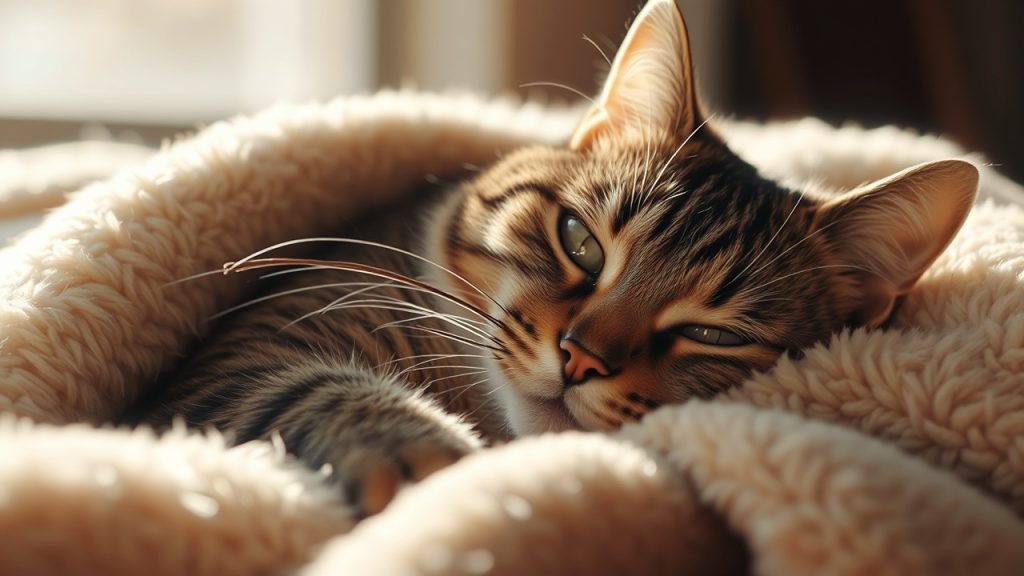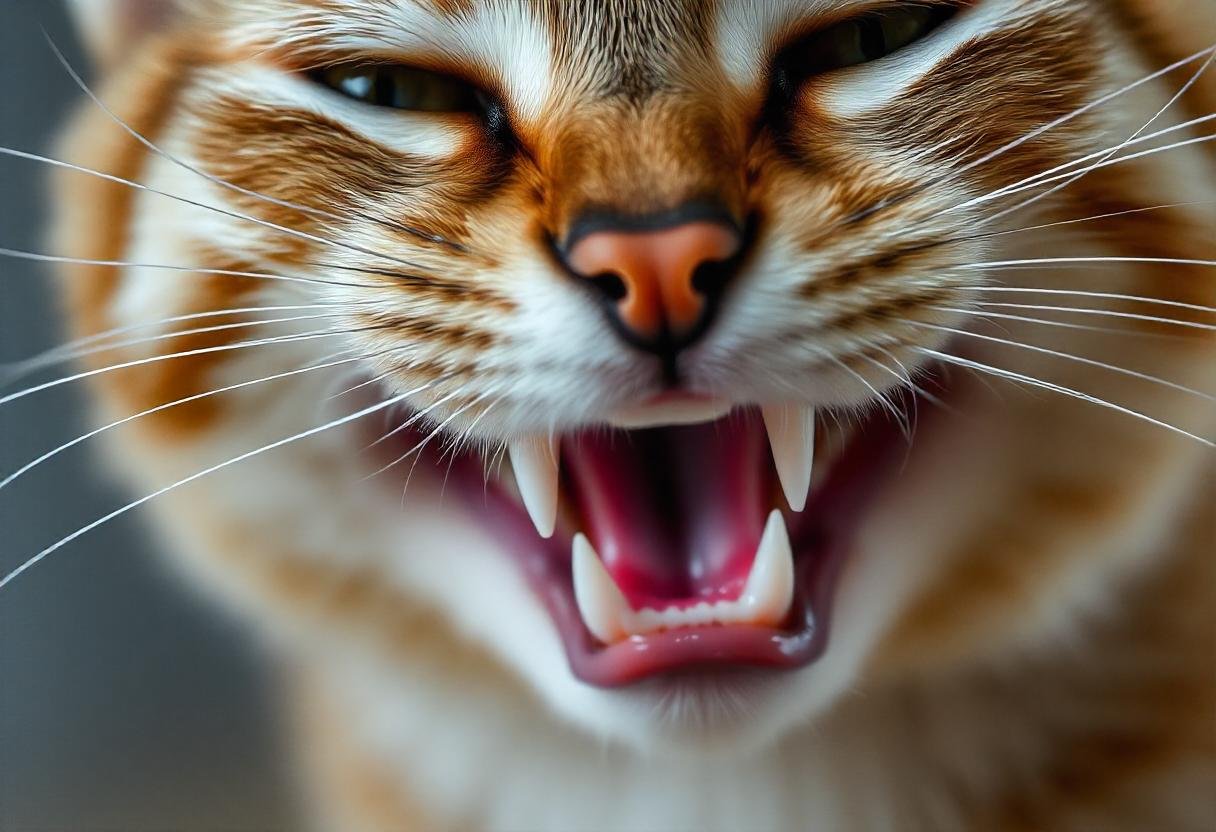Every cat owner loves to see their furry friend healthy and happy. But what happens when you feel your cat’s gums and notice they’re unusually pale? You might find yourself worried, wondering what’s going on and how to help.
A Quick Look at a Cat’s Gums
A cat’s gums, also known as their oral mucosa, are normally a healthy pink color. This is because the gums have a good blood supply, giving them a healthy rosy hue.
Why Are Pale Gums a Concern?
Pale gums, or pallor, in cats can be a sign of a variety of conditions, ranging from simple dehydration to serious medical problems. Pale gums often indicate that there is a lack of oxygenated blood reaching the surface. This can be due to a variety of factors, including anemia, poor blood flow, or even a serious heart condition.
Recognizing Normal Pale Gums
It’s important to note that some cats have a naturally slightly paler gum color. This is usually not a cause for concern if they are otherwise healthy and don’t have any other unusual symptoms. If your cat has a naturally paler gum color, you’ll be able to recognize this easily, and you can use this as a reference point.
Causes of Pale Gums in Cats
Here are some common reasons why a cat’s gums might be pale:
- Anemia: Anemia is a condition where the red blood cells, which are responsible for carrying oxygen throughout the body, are low or defective. This can cause a lack of oxygenated blood reaching the surface, leading to pale gums.
- Dehydration: Dehydration occurs when the body doesn’t have enough fluids. This can lead to a decrease in blood volume, causing the gums to appear paler than usual.
- Poor Blood Flow: Poor blood flow can be caused by a variety of factors, including heart disease, circulatory problems, or even a blood clot. This can lead to a decrease in oxygenated blood reaching the gums, causing them to appear pale.

- Shock: Shock is a serious medical condition that occurs when the body is not able to deliver enough oxygen to the vital organs. It can cause a variety of symptoms, including pale gums, weak pulse, rapid breathing, and lethargy.
- Internal Bleeding: Internal bleeding can cause a decrease in blood volume, leading to pale gums.
- Liver Disease: Liver disease can affect the production of red blood cells, leading to anemia and pale gums.
- Kidney Disease: Kidney disease can also affect the production of red blood cells, leading to anemia and pale gums.
Other Signs of Illness in Cats
While pale gums can be a sign of a health problem, it’s important to remember that this is just one symptom. Pay close attention to your cat’s behavior and look for any other concerning signs that might accompany pale gums. These could indicate a more serious problem.
- Lethargy: If your cat is not eating, it’s a big red flag, especially if it’s accompanied by lethargy.
- Vomiting: Forceful expulsion of contents from the stomach.
- Diarrhea: Loose stool.
- Difficulty Breathing: Labored breathing or gasping for air.
- Changes in Urination: Difficulty urinating or urinating more frequently.
- Changes in Behavior: Sudden increase in vocalization, hiding, aggression, or changes in personality.
A Case Study: Whiskers’ Pale Gums
Whiskers, a 5-year-old Maine Coon, had been showing signs of lethargy and was not interested in eating. His owner, David, also noticed that Whiskers’ gums seemed unusually pale. “He just wanted to sleep,” David says. “He wasn’t his usual playful self.”
David took Whiskers to the vet, who performed a physical exam and examined his gums. The veterinarian found that Whiskers’ gums were indeed pale, and she recommended blood work to rule out anemia and other conditions.
Diagnosing Pale Gums in Cats
Diagnosing the cause of pale gums in cats requires a thorough examination by a veterinarian. They will perform a physical exam, ask about your cat’s history, and often recommend some additional testing.
- Physical Examination: The veterinarian will assess your cat’s overall health, including their weight, body condition, and any signs of illness. They will check your cat’s temperature, pulse, and respiration, and they will examine their eyes, ears, nose, teeth, and gums. They will also feel your cat’s abdomen and lymph nodes for any abnormalities.
- Bloodwork: Blood tests can help identify a variety of medical conditions, including anemia, infections, kidney disease, liver disease, and diabetes.
- Urinalysis: A urinalysis can detect urinary tract infections, kidney problems, and other conditions.
- Radiographs (X-rays): X-rays can be used to examine bones, organs, and other structures, helping to diagnose a variety of conditions.
- Ultrasound: Ultrasound uses sound waves to create images of internal organs, providing a detailed view of the organs and surrounding structures.
Treating Pale Gums in Cats
Treatment for pale gums in cats depends on the underlying cause.
- Anemia: Treatment for anemia might include:
- Iron Supplements: Iron supplements can help increase red blood cell production.
- Blood Transfusions: In severe cases of anemia, blood transfusions may be required to restore blood volume and oxygen-carrying capacity.
- Dehydration: Treatment for dehydration might involve:
- Fluids: Fluids are often given intravenously to help combat dehydration.
- Oral Fluids: Encouraging your cat to drink more water or giving them electrolyte-rich fluids can help them rehydrate.
- Poor Blood Flow: Treatment for poor blood flow might involve:
- Medications: Medications can help improve blood flow and reduce blood pressure.
- Surgery: Surgery may be required to correct any structural problems in the heart or circulatory system.
- Shock: Treatment for shock is a medical emergency. It often involves:
- Fluids: Intravenous fluids are given to restore blood volume and blood pressure.
- Medications: Medications are given to support the heart and improve blood flow.
- Internal Bleeding: Treatment for internal bleeding might involve:
- Surgery: Surgery may be required to stop the bleeding.
- Blood Transfusions: Blood transfusions might be required to replace lost blood.
- Liver Disease: Treatment for liver disease often involves:
- Medications: Medications can help manage symptoms and slow the progression of the disease.
- Dietary Changes: Dietary changes can help reduce stress on the liver.
- Kidney Disease: Treatment for kidney disease often involves:
- Medications: Medications can help manage symptoms and slow the progression of the disease.
- Dietary Changes: Dietary changes can help reduce stress on the kidneys.
A Case Study: Whiskers’ Pale Gums Recovery
Whiskers, the Maine Coon with pale gums, responded well to treatment. The veterinarian prescribed him iron supplements, and David followed the veterinarian’s instructions for providing him with supportive care, including fresh water and a bland diet. After a few days, Whiskers’ gums were back to a healthy pink color, and he started to feel better.
“Whiskers was back to his playful self after a few days,” David says. “It was a relief to see him feeling better.”
Conclusion
Pale gums in cats can be a sign of a variety of conditions, but it’s important to remember that your cat is still your loving companion. By understanding the causes and seeking professional help, you can help your cat receive prompt veterinary care and increase their chances of a good outcome.

Leave a Reply